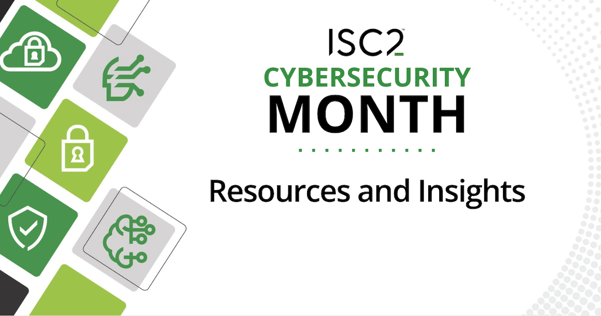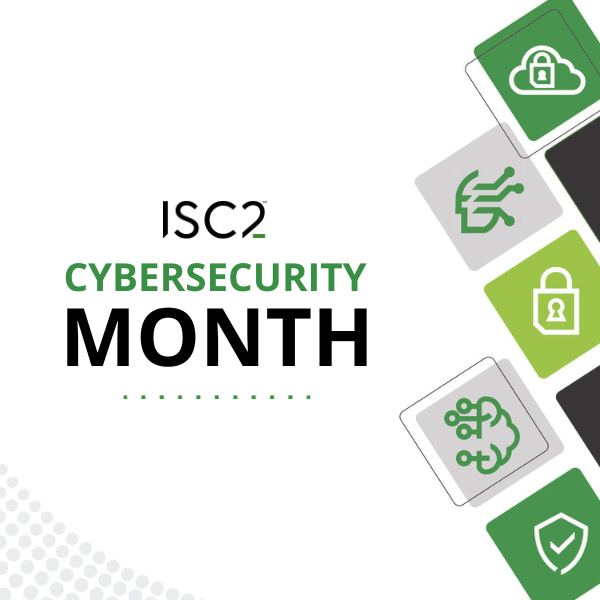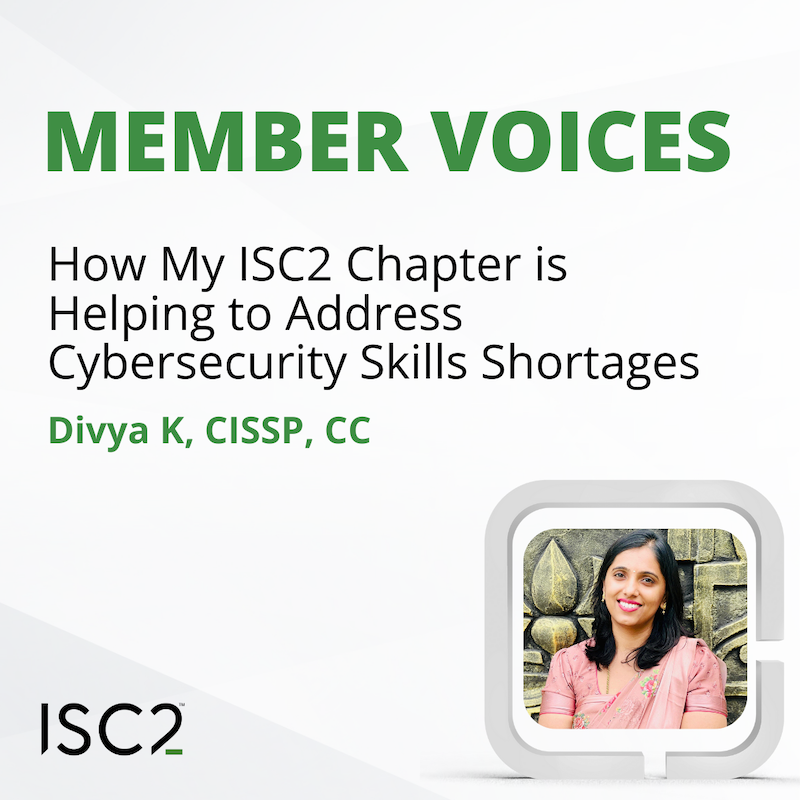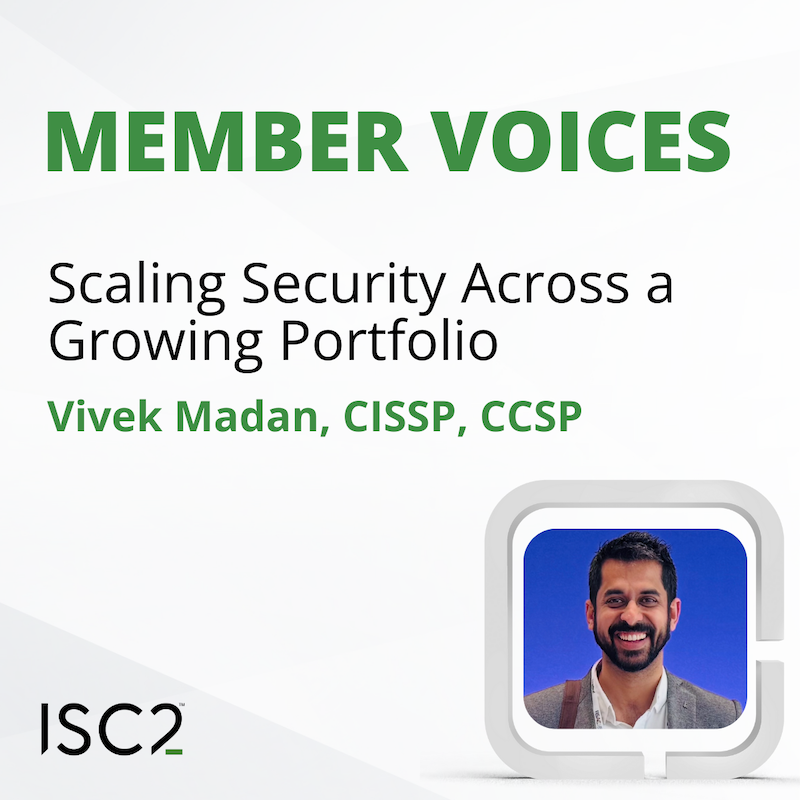ISC2 marked Cybersecurity Awareness Month with a series of articles featuring advice, experiences and opinions from ISC2 members on how to raise cybersecurity awareness, tackle critical security challenges to create a more robust and resilient workplace and to improve understanding of key cybersecurity trends and issues. We’ve collected that shared knowledge into a single resource for you to use and share.
 Cybersecurity Month underscores the role of professionals as educators, advocates and leaders in digital safety and cybersecurity best practices. While technical defenses like firewalls, encryption and intrusion detection systems are critical, human behavior remains the most vulnerable entry point for cyberattacks. Phishing, weak passwords and lack of awareness about scams consistently rank among the top causes of breaches.
Cybersecurity Month underscores the role of professionals as educators, advocates and leaders in digital safety and cybersecurity best practices. While technical defenses like firewalls, encryption and intrusion detection systems are critical, human behavior remains the most vulnerable entry point for cyberattacks. Phishing, weak passwords and lack of awareness about scams consistently rank among the top causes of breaches.
Continuous learning is a hallmark of the field, and the following articles encourage practitioners to refresh their own knowledge, pursue certifications, and stay current with evolving threats:
Webinar
Security Industry 101: What Every Newcomer Needs to Know
New to the security industry? Or thinking about transitioning into an information security role? If so, this webinar is for you - a one-hour ‘crash course’ on the entire security industry from the terms and acronyms you need to know to a look at key threats and tactics.
Viewpoints
Cybersecurity Month: How to Ensure a Good Security Posture
What is the number one thing organizations should be doing to ensure they keep a good security posture? Responses revealed common themes around leadership, education and shared responsibility.
Cybersecurity Month: Proof of a Strong Culture of Security
We look at what actions are proof members of your organization support a strong culture of security. ISC2 members discuss leadership buy-in, metrics and getting everyone in the organization to play a role in cybersecurity.
Cybersecurity Month: Best Security Education
We look at answers to the question “What is the best form of security education organizations can provide to stakeholders?” Respondents offered a variety of suggestions, with particular emphasis on providing engaging content, customization, and hands-on, real-world simulations.
Articles
Professionals Share Knowledge and Education During Cybersecurity Awareness Month
Every October, the global cybersecurity community comes together to recognize Cybersecurity Awareness Month. Established to raise awareness about the importance of safeguarding digital systems, this month-long initiative has become a cornerstone of efforts to strengthen cybersecurity practices among individuals and organizations alike.
From Dominican Dreamer to Cybersecurity Leader: Building Pathways for the Next Generation
Cristian Martinez, CISSP, shares his cybersecurity career story and tells us about his work to help bring people – often from outside of IT – into the cybersecurity field.
How I Integrated Cybersecurity into Our Software Lifecycle
Shilpi Mittal, CISSP, CCSP, shares her experiences of changing and improving cybersecurity processes, central to which raising awareness of cybersecurity and its criticality during software development and application lifecycles.
Why Digital Identities Are Important and How to Safeguard Them
Lorenzo Leonelli, CISSP, discusses why greater awareness of identity and access management, along with sensible use and protection of access credentials is critical within organizations, and shares some best practices and practical examples from his own experiences.
Streamlining Cybersecurity Reviews Through Faster, Smarter Questionnaire Responses
Customer security questionnaires are more than just compliance exercises; they are trust accelerators. Bhavya Jain, CISSP, shares his experience of implementing a vendor-neutral, automated solution to streamline CSQ responses and better support the organization.
Eliminating the Privilege Time Bomb: How JIT Access Redefines Privileged Access Management
Anupam Nandan, CISSP, shares his experience of contending with poorly managed access management and the cybersecurity challenges created by persistent privileged access being granted at will.
Navigating Cybersecurity Through a Neurodiverse Lens
To raise awareness and understanding of neurodiversity in the cybersecurity field, Michael Hasenfang, CISSP, shares his story of being a neurodiverse professional and what he has learned from it.
From Air-Gapped to Agentic: A CISSP's Front Row Seat to the AI Workflow Shift in the Defense Industrial Base
Allen Westley, CISSP, explains how rapid IT and cybersecurity shifts in defense environments are redefining the roles of CISSP-certified professionals, making them essential to guide these organizations through the white heat of technology evolution.
Driving Security Maturity Through Compliance: My Approach For Actionable Audits
Akhila Nama, CISSP, shares her experience of conducting security audits and how she’s tackled the challenge of such tasks sliding into being a routine exercise rather than a functional tool they should be.
Keeping Configuration Management Simple
Larry Watlington, CISSP, discusses the implications of having a fundamental understanding of configuration management based on an established risk management framework.
Protecting Seniors from Online Scams: How Cybersecurity Professionals Can Help
Every day, cybercriminals steal millions from our elderly loved ones. Cybersecurity professionals have the power to prevent it. Yuksel Aydin, CISSP, discusses how cybersecurity professionals can help better educate and support those at risk.
Empowering Future Cybersecurity Leaders: A ISC2 Chapter Partnership with Anglia Ruskin University
The cybersecurity profession continues to face a significant skills shortage. Renata Vincoletto, CISSP explains how the ISC2 East of England Chapter and Anglia Ruskin University have responded, building a cybersecurity community-centered partnership that connects academics, students and industry professionals.
Boosting Cybersecurity Awareness in the Public Sector Through Targeted Training
Implementing a strategic, cost-effective awareness program can drastically reduce cyber-related risks. Iftekhar Alam, CISSP, CCSP, draws on hands-on experience to share practical guidance on integrating cybersecurity awareness initiatives into a government and public sector organization's assurance processes and audit reporting.
Measuring What Matters: How To Quantify Cyber Security Effectiveness
Cybersecurity success isn’t just about stopping attacks. It’s also about being able to measure how well we are doing it – which is where information security metrics and key performance indicators (KPIs) come in. For Anith Dakamarri, CISSP, these are not just numbers, they are the story of an organization’s security posture; a way to see, in real time, how effectively we prevent, detect and respond to threats.
Risk Acceptance: A Sticking-Plaster Solution?
Done thoughtfully, risk acceptance is a valuable governance tool; As Ernest Blankson, CISSP, explains, problems arise when acceptance shifts from being a conscious choice to a routine shortcut and a temporary fix.
What Next?
Across the month, experts highlighted that while threats like AI-driven attacks and supply-chain compromises are growing more sophisticated, the human element remains the most common target. Prevention also needs better resilience — encouraging organizations to strengthen governance, incident-response readiness and security culture. Ultimately, scalable protection starts with everyday cybersecurity hygiene and shared responsibility between individuals and organizations.



